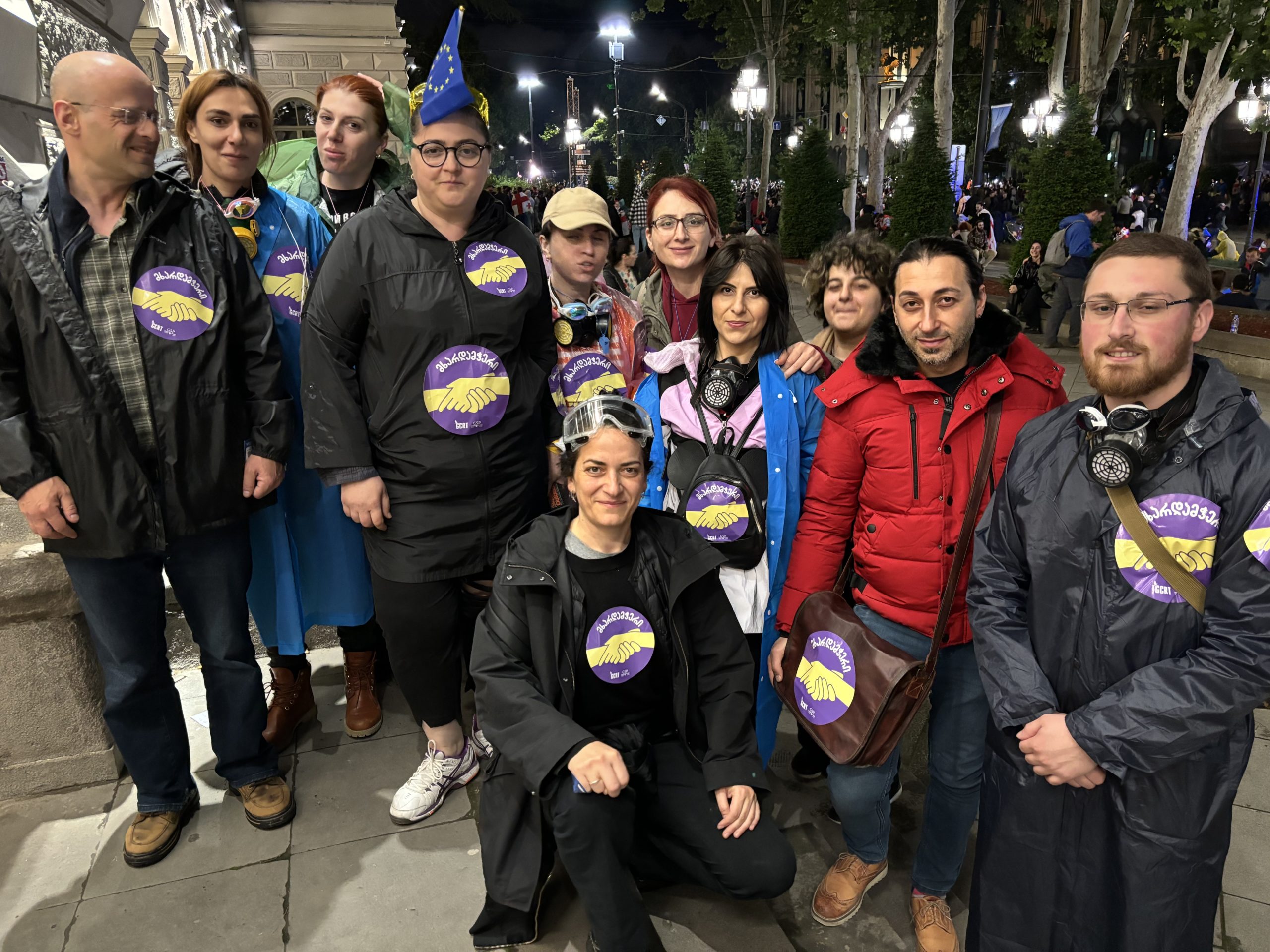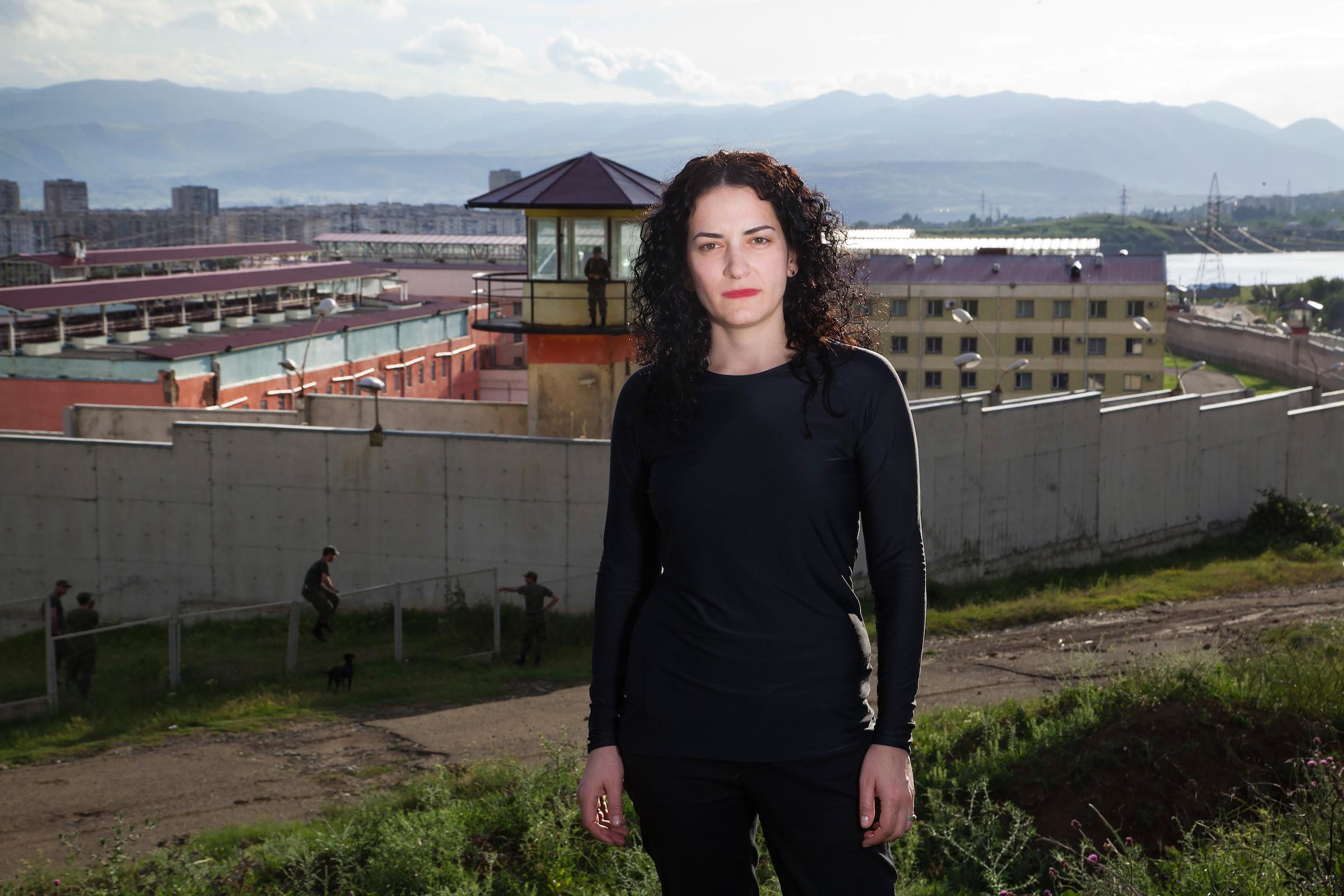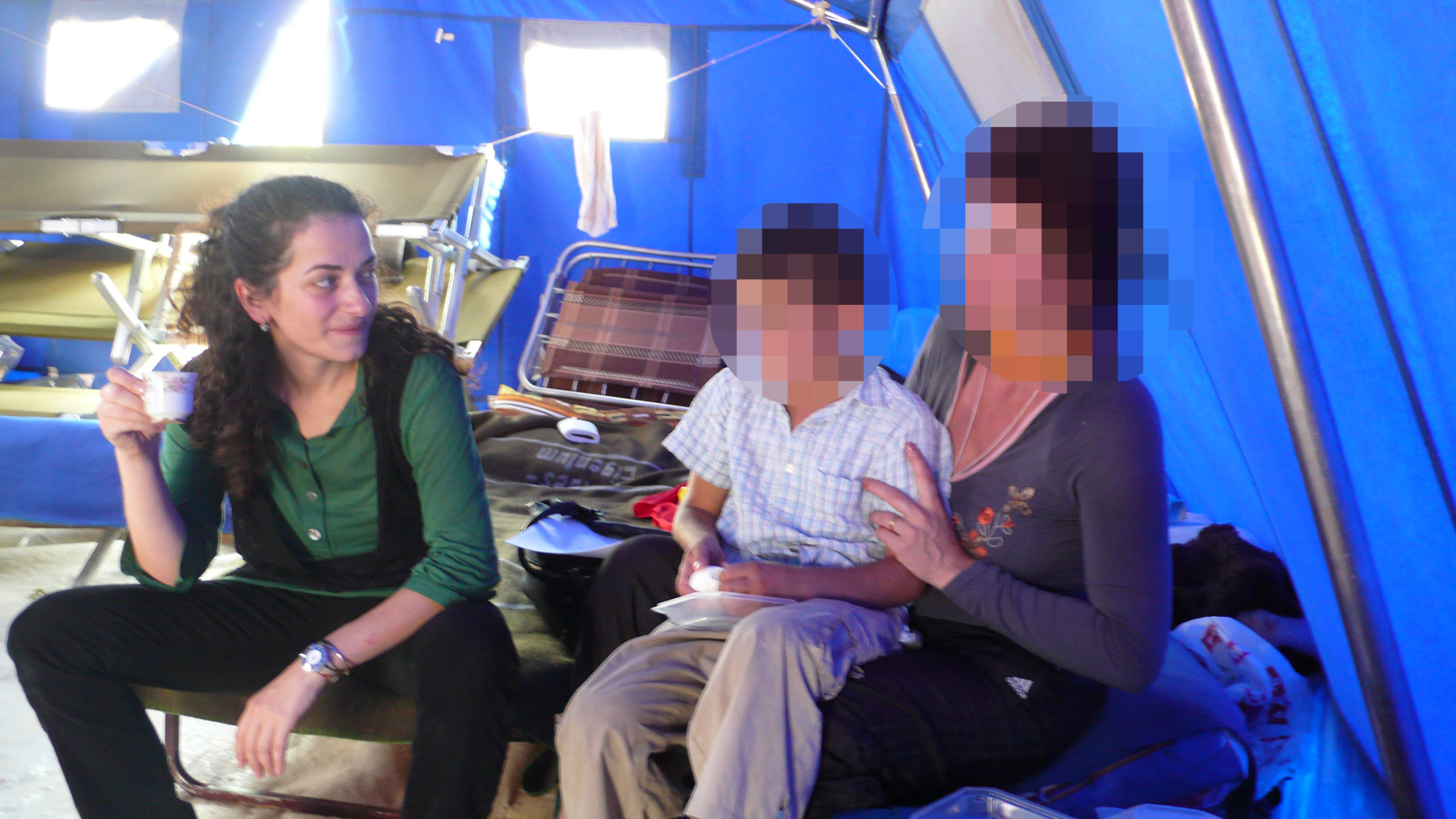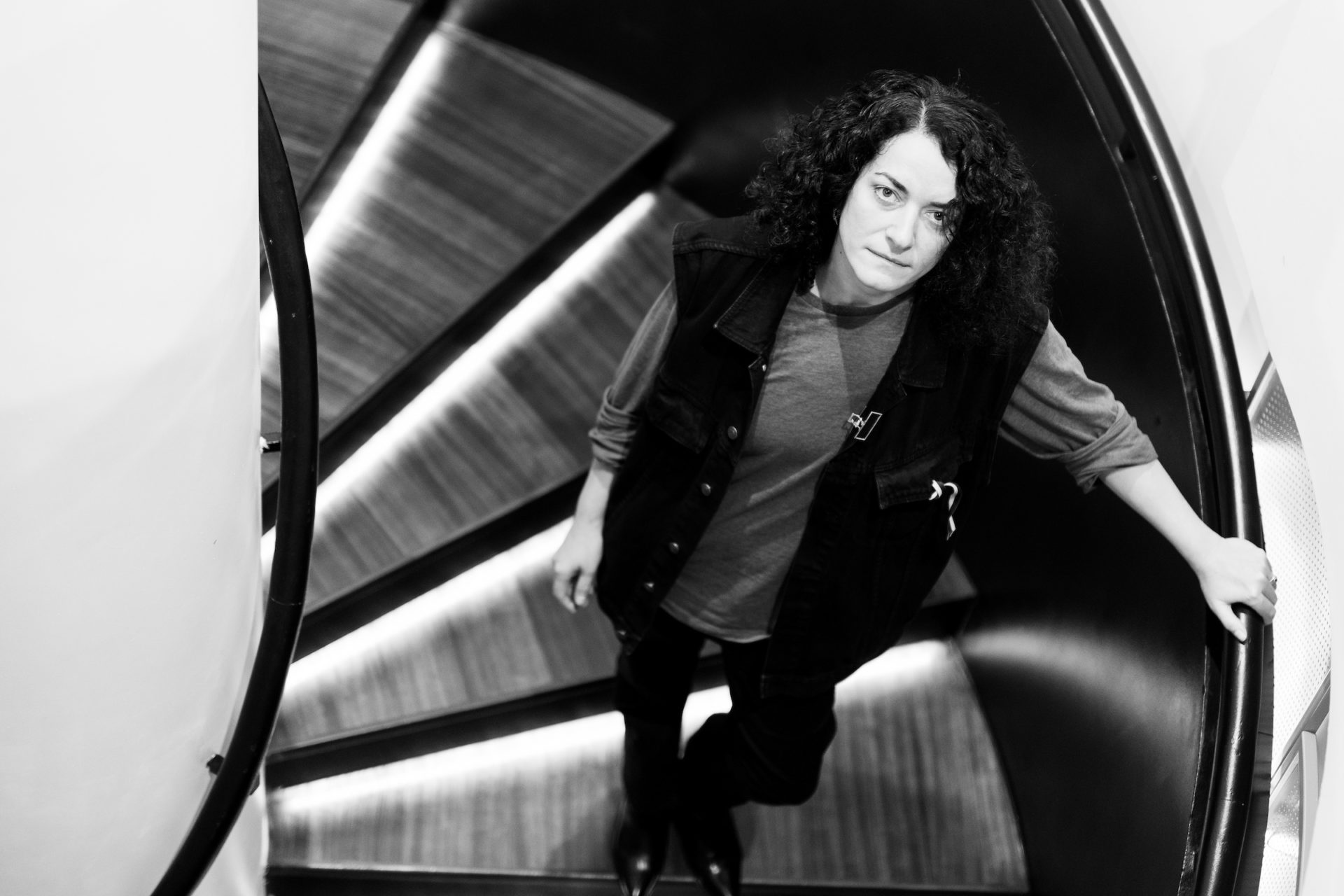Lela Tsiskarishvili has dedicated her career to the rehabilitation of survivors of torture and severe human rights violations. As the Executive Director of the Georgian Centre for Psychosocial and Medical Rehabilitation of Torture Victims (GCRT), a member organisation of Human Rights House Tbilisi, and a leading voice in international anti-torture efforts, her work has had a lasting impact on some of the most vulnerable communities in Georgia, Ukraine, Chechnya, and beyond.
This interview was also published by EU Neighbours East.
What kind of violations are being committed against peaceful protesters in the context of the situation in Georgia now?
To understand what is happening in Georgia right now, it’s important to take a step back and look at the bigger picture.
The capture of the Georgian state by oligarch Bidzina Ivanishvili has been a process years in the making. It was a gradual erosion of democracy, but in 2024, events took a radical turn.
In the spring of 2024, with the reintroduction of the Russian-inspired “Foreign Agents” Law, we witnessed brutal crackdowns on protests. Georgian Special Forces abducted protesters straight from the streets and brutally beat them—particularly targeting vocal opponents of the government. Some were attacked near their apartment buildings, while others were tracked, harassed, and intimidated in an attempt to silence dissent.
Civil society became the main target. Activists and NGO leaders experienced direct intimidation. Their homes were vandalized with threatening messages, and offices—including Human Rights House Tbilisi—were defaced in a coordinated effort to instil fear and discourage resistance. Our family members, including children, were receiving threatening phone calls.

On May 28, 2024, the law was passed, and civil society refocused its efforts on the October parliamentary elections. Election monitoring missions were launched because there was already an expectation of rigging. But the scale of the fraud exceeded the worst predictions.
From Fraud to Repression
On November 28, 2024, the government announced it was halting Georgia’s EU accession process. That same day, an enormous protest erupted.
What followed in the last days of November and the first week of December was unlike anything Georgia had seen in the 21st century.
Masked men—representatives of the Special Forces—brutally beat and tortured peaceful protesters in the streets, in full view of the world. It was live-streamed on television and social media, a shocking display of state-sanctioned violence.
For more than a decade, torture had been largely removed from Georgia’s human rights discourse. Ironically, the current ruling party won the 2012 elections on an anti-torture platform, promising to end the horrors that had been happening in the penitentiary system. Now, in 2024, the de facto government has brought torture back—this time to the streets of Tbilisi.

Systematic Torture and Ill-Treatment
With support from the International Rehabilitation Council for Torture Victims (IRCT) and the World Organisation Against Torture (OMCT), GCRT and the Georgian Young Lawyers Association (GYLA) launched an independent fact-finding mission.
What we found was undeniable. More than 200 people have reported being subjected to torture or ill-treatment—and these are only the ones willing to speak. Many others remain silent, fearing reprisals.
There are clear patterns emerging that indicate a systemic approach to torture. People were beaten using the same methods inside police vans, which had been specifically equipped for this purpose. This happened across multiple locations.
In certain cases, medical care has been deliberately withheld. On a number of occasions, protesters who had been severely beaten were brought to police stations, where medical assistance was not provided. Lawyers, not the state, had to call for emergency care. In some cases, people fainted from pain during their court hearings due to a lack of medical attention. These were not real trials—these were sham proceedings, designed to intimidate. Every detainee was either fined or sent to administrative detention.
Fines have now become a new method of repression – I call it financial warfare on the protesters. On December 30, 2024, the government introduced new draconian legislation, increasing fines tenfold. These fines are now much higher than the average monthly salary in Georgia, making peaceful protests financially devastating for many people.
During the protests, Special Forces deployed excessive amounts of tear gas. The only way to breathe was to cover one’s face with a mask or scarf. Now, simply wearing any kind of facial covering at a protest is considered an offense and carries a huge fine. Many people have suffered long-term respiratory issues due to the gas. Others have been fined for “blocking roads”—a natural consequence of mass demonstrations. Two of my colleagues from GCRT have personally been fined for this reason.
Torturers Are Rewarded, Not Punished
Not a single person has been held accountable for the brutality against peaceful protesters. Instead, the opposite is happening. The head of the Special Forces, the man directly overseeing these violations, has been awarded a Presidential Medal of Honor. The Minister of Internal Affairs, who is sanctioned under the Magnitsky Act, has received the highest national honor.
The message is clear: those who commit these crimes are being rewarded.
Supporting Those Affected: Why Documentation Matters
At GCRT, we focus on providing psychosocial and medical support to those who have suffered torture and ill-treatment. The need is overwhelming. People have had their noses, arms and ribs broken, suffered concussions, and in some cases, endured brain hemorrhages from the beatings. Many now live in a constant state of fear. All suffer from various types of flashbacks—ranging from a permanent taste of blood in the mouth to reliving their own beatings and beatings of others.
What these people have endured is profoundly traumatic. Most of them believed they were going to die. The majority were threatened with rape.
Justice begins with truth. That is why documentation is essential.
By gathering forensic evidence and legal testimony, we are establishing the systemic nature of these violations. We are proving intent, exposing the full extent of the brutality, and building a record that cannot be ignored.
A major challenge is that the torturers remain anonymous. Their faces were covered, and the violations were carried out in darkness, making it impossible for survivors to identify them. The justice system in Georgia is compromised—it does not serve the people; it serves the oligarchy.
But we believe in international justice.
This is why evidence matters. The world must know what is happening in Georgia. And one day, this documentation will be used to hold the perpetrators accountable.
Human Rights House Tbilisi is actively fundraising to pay the fines of peaceful protesters. At the time of the publication of this article, Human Rights House Tbilisi has paid around 500 fines costing around 500 000 GEL [approx 168 000 EUR].
You have worked with human rights and the rehabilitation of torture victims for over two decades. What motivated you to start work in this field?
I was born in the Soviet Union in 1979. By 1988, Georgia’s independence movement was gaining momentum, marked by widespread protests and hunger strikes. I remember visiting the strike site with my parents—seeing young people sitting, lying on the steps in front of the parliament building. Then, on April 9, 1989, Russian troops violently dispersed the demonstration, killing protesters in Tbilisi. The next day, I remember the silence—at my aunt’s place, in the streets, in the air itself. The youngest protester killed was a 15-year-old girl. Soon after, Georgia declared independence and held elections.
The times were turbulent.
In 1991, civil war erupted, overthrowing Georgia’s elected president. When it ended, my father took me to Rustaveli Avenue, where bullet casings littered the ground. My school had burned down. It was surreal, impossible to process. Then came the wars in Abkhazia and South Ossetia—displacing over 300,000 people. The 1990s followed: young gangsters looting the streets, terrorizing people; weeks without electricity; long lines for bread; no heating or hot water. This country carries deep trauma. I have witnessed a portion of it while growing up.
I haven’t been directly exposed to any traumatic events, I had an emotionally stable childhood, but in Georgia the only certain thing was uncertainty.
Amidst all of this, there was a kind of strange sweetness, some sense of community and togetherness. Oftentimes, when my friends and I recall our adolescence – it’s this raw and real connection and sparkle we talk about – rather than the danger and depravity we were living in. If we had been adults at that time, of course it would have been much more difficult. But somehow our parents shielded us.
Then, at 17, I was invited to participate in a program funded by Open Society—back when Russia still allowed Open Society to operate. The program brought together young people from conflict zones—Georgia, Abkhazia, South Ossetia, the Balkans, and Northern Ireland. We spent ten days in a village near Moscow, and those days changed my life.
What I had been shielded from in Georgia now confronted me directly—peers from all sides of conflict, deeply wounded, mistrustful, often seeing each other as the enemy. But over time, something shifted. We began to listen. To recognize what lay beyond our own narratives. Curiosity replaced suspicion. Friendships formed. And in the midst of it all, we laughed—a lot. It was an incredibly well-designed program, one that opened an entirely new world to me. By the time I returned home, I knew I wanted to dedicate myself to conflict studies.
At 19, one of my lecturers approached me with an opportunity: a translation job for an NGO working with internally displaced persons from Abkhazia and South Ossetia. In truth, they were probably just looking for cheap labor [laughs], but I was unbelievably lucky to be that cheap labor. It placed me in the midst of some of the brightest minds in mental health—both in Georgia and internationally. I call it a blessing.
It was also a blessing, professionally, to be exposed to the depth and extent of human suffering at such a young age. On one hand, I had an intimate encounter with the darkest sides of humanity—the capacity for cruelty, destruction, and immense pain. On the other, I witnessed the extraordinary resilience of the human spirit. The coexistence of bleakness, beauty, and courage became something I could no longer unsee. It shaped my perspective and gave me the energy to move forward.
That team went on to found GCRT in 2000 with the support of the IRCT. When our founder, Nino Makhashvili, left in 2005, I stepped into the role of director. I was young—by far the youngest staff member in the organization—and terrified. Full of doubts and insecurities. Looking back, I see how graciously the older generation of GCRT allowed me to grow into the leadership role.
Now, two decades later, GCRT has evolved in countless ways. And so have I. My personal journey is deeply interconnected with the journey of GCRT.
Who are your heroes in human rights?
Can we talk about teachers instead of heroes? Heroes seem distant, monumental. However, we can all be heroes at a certain moment. The protest movement in Georgia has shown exactly that—so many amazing, diverse faces, so many acts of courage and dedication. A movement that has no leaders and yet is full of leadership and heroes.
As we speak, an incredible journalist, Mzia Amaghlobeli, is on a hunger strike in prison [at the time of this interview she was on the 20th day of hunger strike]. At this moment, she is Georgia’s first female political prisoner. With her hunger strike, her clarity, and her courage, she is holding the torch for an entire protest movement. These are the kinds of acts that shake systems.
For me, it’s teachers and teachings that guide me through life—role models. Apart from my parents, there are people who have shaped my values in ways I still carry today. Nino Makhashvili, the founder of GCRT, is one of them. She continues to influence me immensely. And then there’s Vlad Klimenko—one of the organizers of the program I mentioned earlier. He was the first person to tell me about Nelson Mandela and apartheid, about the Rwandan Genocide. He also gave me a book by Stanislav Grof and tapes of some badass music. This was a pre-internet era, and I was just a kid from a war-torn country. He kind of showed me a way home—how to be comfortable with suffering and how to find joy in human connection.
Then there is the IRCT movement… Christian Pross, Kathi Anderson, Sana Hamzeh, Dario Lagos, Sebnem Korur Fincanci—just to name a few. The IRCT is a global movement of medical and mental health professionals who attend to the deep and unspoken wounds inflicted by torture. It is a movement that fights against torture. It should be far more recognized worldwide than it is! I think, since the topic is so complex, intimate, and horrifying, even the international human rights community unintentionally avoids embracing the urgency of the rehabilitation of torture survivors.
There is an entire legion of professionals and volunteers who have dedicated their lives to assisting torture survivors—many of whom are survivors themselves.
Colleagues within the Human Rights House Network are friends and heroes. Anar Mammadli comes to mind—an old friend. We recently attended a Human Rights House Network meeting together. Now he is a political prisoner in Azerbaijan—again. As I enter the second act of life (which coincides with my country entering full-scale authoritarianism), I come more and more to terms with the idea of my colleagues or myself possibly being imprisoned. Somehow, this seems like a natural continuation of the fight. I am at peace with this idea (as are many other members of civil society). I don’t have any false optimism around it.
These are people who have the courage to speak truth to power, people who carry light within them, people who are humble, people whose mission is to serve the cause, people who turn compassion into action. People who are ready to sacrifice for the cause. These people are my heroes.
Reflecting on your career, what have been the highlights and how do you measure success?
For me, success is about purpose and meaning. It’s about service. There is a deep sense that what we do at GCRT is meaningful and necessary. We are often at the frontlines—whether in refugee camps, prisons, protests, or on the borders of Russian-occupied territories. We have worked with individuals and communities who have endured unimaginable suffering—people who have been tortured, sexually abused, displaced, deeply traumatized. In Georgia and beyond. We have tried to bring some measure of comfort, justice, and healing.
Proud Moment
One of my proudest moments was being elected President of IRCT. I joined the movement at 19, and 20 years later, I became its youngest president. During my tenure, the organization evolved, and I am proud of that. But more than anything, the experience taught me how to listen—to take in different perspectives, to step back when it wasn’t my place to act, and to step up when leadership was needed.
What have been the challenging moments and how do you cope with the emotional and distressing nature of your work?
In my adult life, what has terrified me the most is Russia’s full-scale invasion of Ukraine. Even now, just saying it makes my heart race. The sheer horror, the fear, the terror. Having lived through Russia’s invasion of Georgia in 2008, I knew what was coming. I knew what my friends and colleagues in Ukraine were about to experience, and yet even with that knowledge, the reality was beyond anything we could have ever imagined.

To cope, I often rely on people—I love people, I love community, it gives me energy, I have a deep trust that human beings are inherently beautiful. But I also love solitude. I suppose I am an introverted extrovert.
A sense of purpose helps me cope. I read a lot, I am a music person. I have also developed formal practices. I have done yoga every morning for more than a decade. I meditate systematically for over three years. Over time, I have become more spiritual. Bearing witness to the world—the beauty and the horror—naturally leads one toward spirituality. It gives me steadiness.
There is a metaphor that I try to live by, from Roshi Joan Halifax. She talks about having a strong back and a soft front. A heart that is open to the suffering of the world, and a back strong enough to hold it and act on it. A front full of love and compassion, and a back full of steadiness, maybe even fierceness, but always equanimity.
My strong back and soft front come from my family—my husband, my sons, my two dogs, and my cat. They ground me. I am a very tactile person, and physical closeness helps regulate my nervous system
How do you stay motivated?
Motivation comes and goes—it is not a constant. I have learned to accept that. Some days, I feel completely demotivated, and I don’t beat myself up about it. It’s okay not to be okay.
But on most days, the work itself provides meaning. And meaning is far more sustaining than motivation.
How important is mental health in human rights work? How can civil society take better care of itself and how can governments better support defenders?
There is a deep martyrdom syndrome in civil society—a toxic culture that normalizes exhaustion, overwork, and self-sacrifice to the point of collapse. We glorify burnout as if it’s proof of commitment. But the truth is, there is no health without mental health.
How can we serve others if we are running on empty? If we are depressed, overworked, or agitated, we cannot show up fully for the people who need us. Taking care of yourself is not selfish—it’s responsible. As Audre Lorde said, “Caring for myself is not self-indulgence, it’s self-preservation, and that is an act of political warfare.”
Self-care in this work is not about luxury—it is about sustainability. Allowing space for pausing, reflecting, and reconnecting with beauty—whether that’s in nature, in small moments of joy, or in humor. Without these practices, our hearts harden. That’s what burnout really is—not just exhaustion, but losing the capacity for compassion.
We don’t have to feel good all the time, it’s impossible!. But we also don’t have to feel bad all the time. We need balance.
This is where the strong back and soft front metaphor from Roshi Joan Halifax becomes so important. A strong back gives us resilience, the ability to endure and fight. A soft front keeps us open—compassionate, empathetic, able to truly connect. If we neglect one, we either break under pressure or become too hardened to do the work effectively.
As for governments, the best way they can support human rights defenders is to stop persecuting them. But beyond that, real support means recognizing the mental and emotional toll of this work. Providing access to mental health services, legal protections, financial security, and safe spaces to rest and recover—these are not luxuries. They are necessities if we want a civil society that is not just surviving, but thriving.
With the current situation unfolding in Georgia, how do you see the future? What challenges do you see, what hopes do you have, and what keeps you motivated?
We are living in a time of radical uncertainty, not just in Georgia, but globally. With the current trajectory of world politics, very difficult times lie ahead.
In Georgia, we are witnessing an accelerated descent into dictatorship. The de facto government has declared war on its own citizens—assaulting dissent, weaponizing propaganda, suppressing protest through force and misinformation. But despite all of this, they cannot break the spirit of the people. In just a few days, we will mark 100 days of protests.
The greatest challenge we face is not just authoritarianism—it’s complete state capture. There is no functioning government. The judiciary, the legislature, and law enforcement are all under one man’s control. Ivanishvili runs the country like a mafia syndicate, not a government. There are no democratic checks and balances, no accountability, no independent state institutions left to counterbalance his power.
And yet, despite all of this, he lacks one thing—public support. His grip on the country is built entirely on force and control, not legitimacy. The demands of the protests are very clear. Release of all political prisoners and new elections.
In moments like this, I return to Viktor Frankl’s words in Man’s Search for Meaning, reflecting on his experience in Auschwitz:
“Forces beyond your control can take away everything you possess except one thing: your freedom to choose how you will respond to the situation.”
This is the one thing no government, no dictator, no system can take away from an individual—the ability to choose a response. In times of repression, choosing to persist, to stay engaged, to hope, becomes an act of quiet defiance.
I do not know what the future holds. There are no certainties, no guarantees. But what I do know is that people are showing up in large numbers. That despite the fear, the fatigue, and the uncertainty, there is still resolve.
Perhaps that is where hope truly lies—not in easy optimism, but in the simple act of continuing.
The human behind the human rights defender – who is Lela Tsiskarishvili?
What is your current favourite book?
Let me just say what I am currently reading. All Fours by Miranda July, I started a couple of days ago and am enjoying it – the main character is a woman of 45 going through a life transition – it’s funny, it’s real, it’s bold. Another book I am currently reading is Faces of Compassion Classic Bodhisattva Archetypes and their Modern Expression. Bodhisattvas are awakened warriors whose hearts are always turned towards other beings. These are beings who chose to remain here to alleviate the suffering of others.
What is your current favourite music album?
David Lynch died recently and he is… my life. It was David Lynch who partially brought me to meditation initially. And so now it’s the Soundtrack From Twin Peaks. It’s on repeat at the moment – especially some of the tracks.
What is your current favourite film?
Now that I mentioned David Lynch, my mind naturally goes to Twin Peaks as a series. It is an all-time favourite.
What advice would you give to a young person considering getting active in civil society?
There’s so much to say. But above all: Small acts of kindness and courage bring about big change. Never underestimate that. There’s a saying I love “Every day, I wake up with the question of whether to save the world or to savor it. My advice? Savor it while you save it.
Be curious. Ask questions. Question authority. Be kind to others, but also—be compassionate toward yourself. Self-compassion is crucial, especially as a young person stepping into activism. This work can be tough, and you need to care for yourself with the same empathy you extend to others.
Also, be brazen. Be mischievous. Shake things up. Push boundaries. Challenge assumptions. The world needs rebels with a cause, people who refuse to be tamed.
Serious change requires serious dedication—but it also requires a sense of play, of wildness. The ones who refuse to play by the rules are often the ones who end up rewriting them.





